-
 Bitcoin
Bitcoin $86,989.5773
2.47% -
 Ethereum
Ethereum $1,907.7486
-0.28% -
 Tether USDt
Tether USDt $0.9998
0.00% -
 XRP
XRP $2.1782
1.30% -
 BNB
BNB $605.9725
-1.07% -
 Solana
Solana $130.9318
2.03% -
 USDC
USDC $0.9997
-0.03% -
 Dogecoin
Dogecoin $0.1757
1.47% -
 Cardano
Cardano $0.6948
1.08% -
 TRON
TRON $0.2378
0.79% -
 Toncoin
Toncoin $4.0441
0.19% -
 Chainlink
Chainlink $14.1226
-0.93% -
 UNUS SED LEO
UNUS SED LEO $9.3952
0.65% -
 Stellar
Stellar $0.2737
-1.37% -
 Avalanche
Avalanche $19.7700
-0.01% -
 Sui
Sui $2.4853
0.25% -
 Shiba Inu
Shiba Inu $0.0...01283
-0.56% -
 Hedera
Hedera $0.1728
-0.67% -
 Polkadot
Polkadot $4.2112
-0.14% -
 Litecoin
Litecoin $86.0983
1.27% -
 Bitcoin Cash
Bitcoin Cash $312.1520
-0.42% -
 MANTRA
MANTRA $6.3442
0.01% -
 Bitget Token
Bitget Token $4.6044
-0.33% -
 Dai
Dai $0.9999
0.00% -
 Ethena USDe
Ethena USDe $0.9999
0.00% -
 Hyperliquid
Hyperliquid $14.0809
4.33% -
 Pi
Pi $0.6847
-3.43% -
 Monero
Monero $219.9574
0.86% -
 Uniswap
Uniswap $6.2581
0.04% -
 Pepe
Pepe $0.0...07858
1.61%
How to evaluate the load capacity of the power supply when the graphics card is mining
To evaluate power supply load capacity for GPU mining, calculate total system power draw, add a 20-30% safety margin, and choose a PSU with higher wattage.
Mar 29, 2025 at 11:14 am
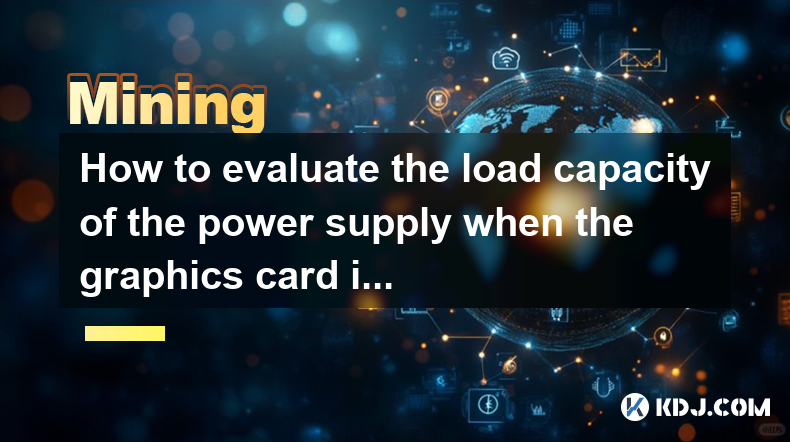
How to Evaluate the Power Supply Load Capacity When the Graphics Card is Mining
Understanding Power Consumption in Cryptocurrency Mining
Cryptocurrency mining, particularly with GPUs, is a power-intensive process. Understanding your power supply's capabilities is crucial to prevent damage to your hardware and ensure stable operation. Insufficient power can lead to system instability, crashes, and even irreversible damage to your components. Overestimating your power needs is less problematic, but leads to unnecessary expense. Accurate assessment is key.
Determining Individual Component Power Draw
The first step is to determine the power consumption of each individual component in your mining rig. This includes the graphics cards (GPUs), the motherboard, CPU, RAM, storage drives, and any other peripherals. Manufacturers usually provide power specifications for their products. Look for the TDP (Thermal Design Power) rating for your CPU and GPUs. This is a good starting point, but remember that actual power draw can vary under load. Always check the manufacturer's specifications for the most accurate data.
Accounting for GPU Power Consumption Variations
GPU power consumption varies significantly depending on the mining algorithm, the overclocking settings, and the efficiency of the card itself. Different GPUs have different power appetites. Use a power meter to accurately measure the power draw of each GPU under mining load. This is far more reliable than relying solely on manufacturer specifications. Many mining software packages provide real-time monitoring of power consumption, providing valuable data.
Calculating Total System Power Draw
Once you have the power draw for each component, add them together to get the total system power draw. Remember to account for any potential overhead. It's always wise to add a safety margin of at least 10-20% to your calculated total. This accounts for power spikes, fluctuations, and inefficiencies in the power supply itself. This buffer ensures your system doesn't draw more power than the PSU can safely deliver.
Understanding Power Supply Ratings
Power supplies are rated in watts (W). This rating indicates the maximum power the PSU can deliver continuously. Never exceed the rated power of your PSU. It's crucial to choose a PSU with a wattage rating significantly higher than your calculated total system power draw, incorporating that safety margin. A higher-wattage PSU will operate more efficiently and have a longer lifespan.
Choosing the Right Power Supply
With your total power draw calculated, you can now select an appropriate power supply. Choose a PSU with a wattage rating at least 20-30% higher than your calculated total system power draw. This ensures ample headroom and prevents overloading the PSU. Also consider factors like efficiency (look for 80+ certifications) and reliability when choosing a PSU.
Monitoring Power Consumption During Mining
Even with careful planning, it's essential to monitor your system's power consumption during mining operations. Use monitoring software to track the power draw in real-time. This allows you to identify any potential issues early on and make adjustments as needed. Regular monitoring is crucial for preventing potential damage to your hardware and maintaining optimal mining efficiency.
Step-by-Step Guide to Evaluating Power Supply Load Capacity
Here's a step-by-step guide summarizing the process:
- Step 1: Gather the TDP specifications for all components from manufacturer websites.
- Step 2: Use a power meter to measure the actual power draw of each GPU while mining.
- Step 3: Sum the power draw of all components, including a 20-30% safety margin.
- Step 4: Select a power supply with a wattage rating significantly higher than the calculated total.
- Step 5: Continuously monitor your system's power consumption during mining operations.
Troubleshooting Power Supply Issues
If your system is experiencing instability or shutdowns, it might indicate a power supply issue. Check the PSU's wattage rating and ensure it's sufficient for your setup. Overloading the power supply can lead to component damage, so addressing this issue is critical. Consider upgrading to a higher-wattage power supply if necessary.
Understanding PSU Efficiency Ratings
Power supply efficiency is measured using the 80 PLUS certification. Higher certifications (e.g., 80 PLUS Gold, Platinum) indicate higher efficiency, meaning less power is wasted as heat. More efficient PSUs can translate to lower electricity bills and less heat generated in your mining rig. Consider this when choosing a power supply.
The Importance of Cable Management
Proper cable management is crucial for optimal airflow and PSU performance. Poor cable management can lead to overheating and reduce the efficiency of your power supply. Organize your cables neatly to ensure sufficient airflow within your mining rig.
Factors Affecting GPU Power Consumption
Several factors influence GPU power consumption during mining. These include the specific mining algorithm being used, the overclocking settings applied to the GPU, the ambient temperature, and the age and condition of the GPU itself. Understanding these factors can help you optimize your mining setup and reduce power consumption.
Frequently Asked Questions
Q: Can I use a power supply with a wattage rating slightly lower than my calculated total power draw?
A: No, it's strongly advised against using a power supply with a wattage rating lower than your calculated total. This can lead to instability, damage to your components, and potentially fire hazards. Always choose a PSU with sufficient headroom.
Q: How often should I monitor my system's power consumption?
A: It's recommended to monitor your system's power consumption regularly, especially during extended mining sessions. Real-time monitoring allows you to detect potential issues early on and prevent damage.
Q: What happens if my power supply fails during mining?
A: A power supply failure can lead to immediate system shutdown, data loss, and potentially damage to your GPUs and other components. It's crucial to use a reliable power supply and monitor its performance.
Q: My GPUs are drawing more power than expected. What should I do?
A: This could be due to several factors, including overclocking, mining algorithm, ambient temperature, or even a failing GPU. Check your overclocking settings, monitor temperatures, and consider using a power meter to accurately measure the power draw. If the problem persists, consult the GPU manufacturer's support.
Q: What is the best way to measure GPU power draw?
A: The most accurate method is to use a dedicated power meter that measures the wattage consumed by each GPU individually. This provides a far more precise measurement than relying solely on manufacturer specifications or software estimations.
Disclaimer:info@kdj.com
The information provided is not trading advice. kdj.com does not assume any responsibility for any investments made based on the information provided in this article. Cryptocurrencies are highly volatile and it is highly recommended that you invest with caution after thorough research!
If you believe that the content used on this website infringes your copyright, please contact us immediately (info@kdj.com) and we will delete it promptly.
- Binance co-founder Changpeng Zhao (CZ) believes 99.95% of AI agents do not need an ecosystem token.
- 2025-04-03 00:55:12
- Bitcoin Regains Bullish Momentum, Surging Past $87,000
- 2025-04-03 00:55:12
- Evolving From Speculative Investments to Mainstream Assets, WisdomTree Is at the Forefront of Leading the Charge
- 2025-04-03 00:50:12
- title: Tron founder Justin Sun has publicly declared that First Digital Trust, a Hong Kong-based fiduciary
- 2025-04-03 00:50:12
- Sentient Releases Open-Source AI Search Framework That Outperforms GPT-4o
- 2025-04-03 00:45:13
- This new Canadian coin offers a 360-degree view of the northern lights.
- 2025-04-03 00:45:13
Related knowledge
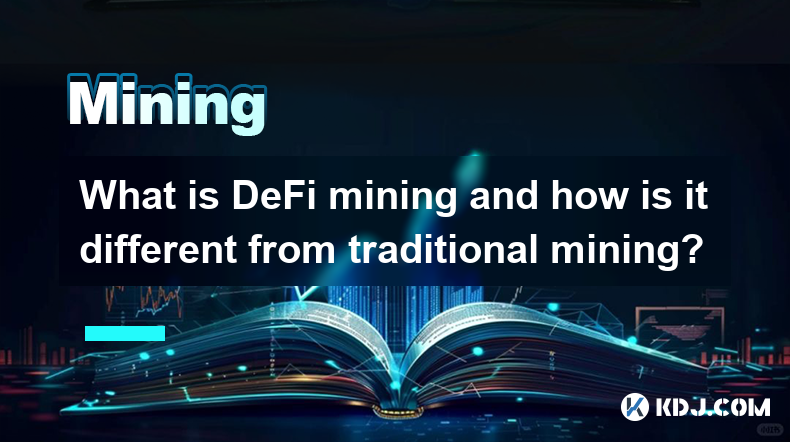
What is DeFi mining and how is it different from traditional mining?
Apr 02,2025 at 09:50am
DeFi mining, also known as yield farming or liquidity mining, is a process within the decentralized finance (DeFi) ecosystem where users provide liquidity to decentralized platforms in exchange for rewards. Unlike traditional mining, which involves solving complex mathematical problems to validate transactions and add them to a blockchain, DeFi mining f...
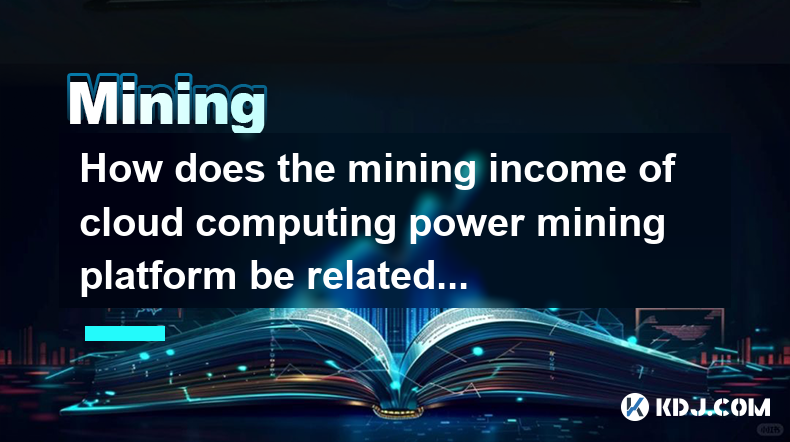
How does the mining income of cloud computing power mining platform be related to mining pool allocation?
Apr 02,2025 at 01:56am
The relationship between the mining income of a cloud computing power mining platform and the allocation of mining pools is a crucial aspect of cryptocurrency mining. Mining income is influenced by various factors such as the efficiency of the mining hardware, electricity costs, and the specific cryptocurrency being mined. However, the allocation of min...
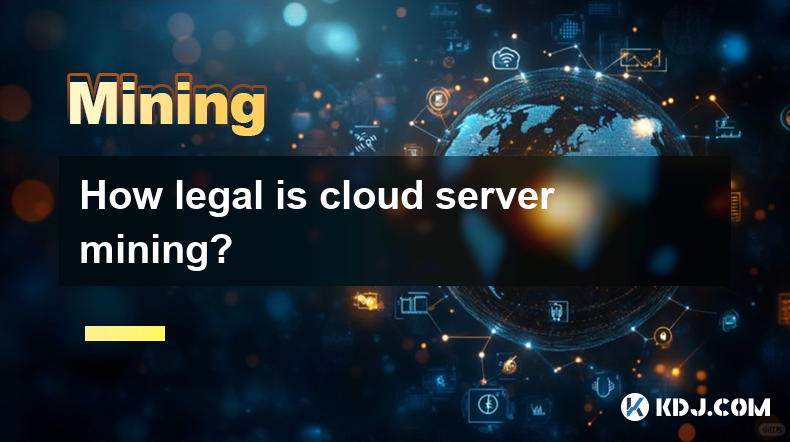
How legal is cloud server mining?
Apr 01,2025 at 08:08am
Cloud server mining has become an increasingly popular method for individuals and companies to participate in cryptocurrency mining without the need for expensive hardware and high electricity costs. However, the legality of cloud server mining can be a complex issue, as it varies by jurisdiction and depends on several factors. This article will explore...
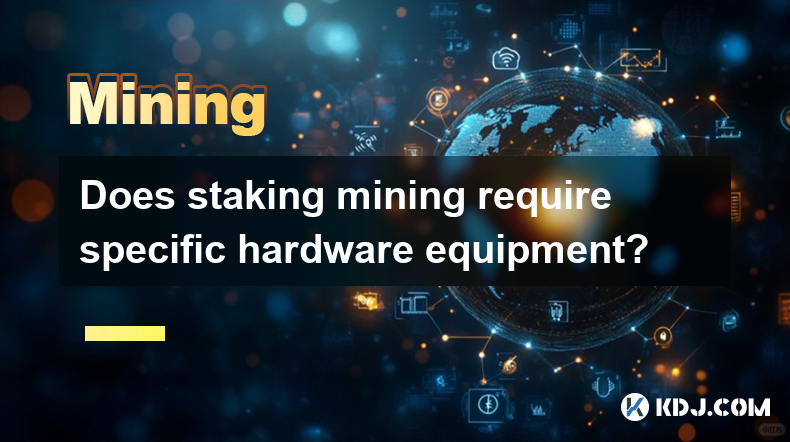
Does staking mining require specific hardware equipment?
Apr 02,2025 at 08:21am
Staking mining, often referred to simply as staking, is a process used by various cryptocurrencies to secure their networks and validate transactions. Unlike traditional mining, which often requires specialized hardware like ASICs (Application-Specific Integrated Circuits) or high-performance GPUs (Graphics Processing Units), staking typically does not ...
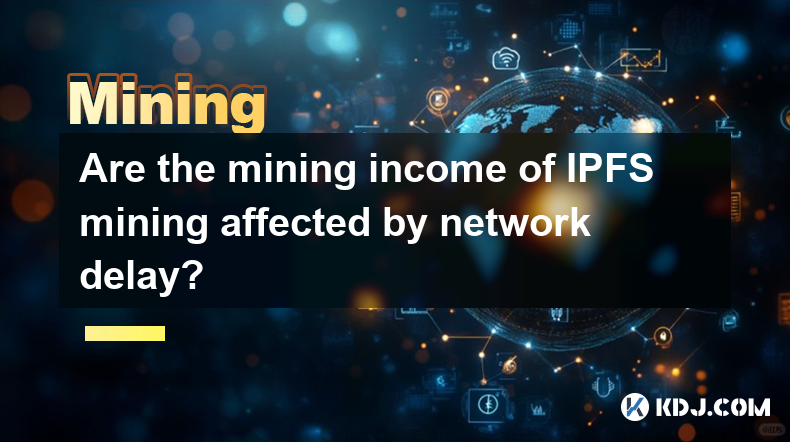
Are the mining income of IPFS mining affected by network delay?
Apr 01,2025 at 09:36pm
Are the Mining Incomes of IPFS Mining Affected by Network Delay? Understanding IPFS Mining and Network Delay's ImpactIPFS (InterPlanetary File System) mining, unlike Bitcoin mining, doesn't involve solving complex cryptographic puzzles. Instead, it focuses on providing storage and bandwidth to the network. Miners earn rewards for storing and sharing dat...
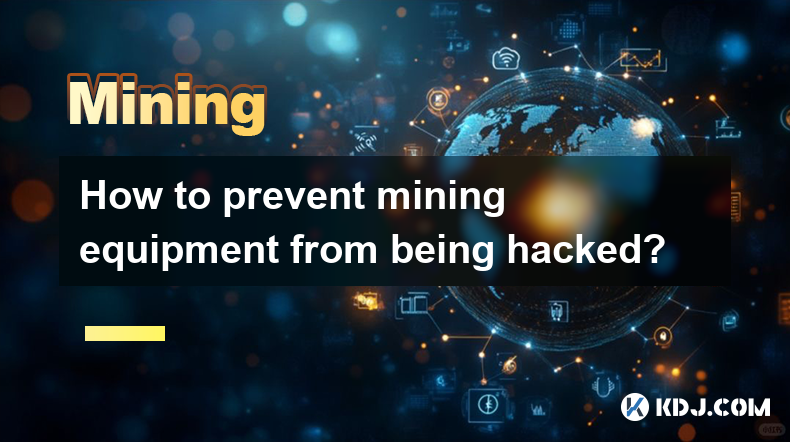
How to prevent mining equipment from being hacked?
Apr 01,2025 at 06:22am
Understanding the ThreatsCryptocurrency mining, while potentially lucrative, exposes your equipment to various cyber threats. These threats range from simple malware infections that steal your mining profits to sophisticated attacks that hijack your entire operation. Understanding these threats is the first step in effective protection. This includes r...

What is DeFi mining and how is it different from traditional mining?
Apr 02,2025 at 09:50am
DeFi mining, also known as yield farming or liquidity mining, is a process within the decentralized finance (DeFi) ecosystem where users provide liquidity to decentralized platforms in exchange for rewards. Unlike traditional mining, which involves solving complex mathematical problems to validate transactions and add them to a blockchain, DeFi mining f...

How does the mining income of cloud computing power mining platform be related to mining pool allocation?
Apr 02,2025 at 01:56am
The relationship between the mining income of a cloud computing power mining platform and the allocation of mining pools is a crucial aspect of cryptocurrency mining. Mining income is influenced by various factors such as the efficiency of the mining hardware, electricity costs, and the specific cryptocurrency being mined. However, the allocation of min...

How legal is cloud server mining?
Apr 01,2025 at 08:08am
Cloud server mining has become an increasingly popular method for individuals and companies to participate in cryptocurrency mining without the need for expensive hardware and high electricity costs. However, the legality of cloud server mining can be a complex issue, as it varies by jurisdiction and depends on several factors. This article will explore...

Does staking mining require specific hardware equipment?
Apr 02,2025 at 08:21am
Staking mining, often referred to simply as staking, is a process used by various cryptocurrencies to secure their networks and validate transactions. Unlike traditional mining, which often requires specialized hardware like ASICs (Application-Specific Integrated Circuits) or high-performance GPUs (Graphics Processing Units), staking typically does not ...

Are the mining income of IPFS mining affected by network delay?
Apr 01,2025 at 09:36pm
Are the Mining Incomes of IPFS Mining Affected by Network Delay? Understanding IPFS Mining and Network Delay's ImpactIPFS (InterPlanetary File System) mining, unlike Bitcoin mining, doesn't involve solving complex cryptographic puzzles. Instead, it focuses on providing storage and bandwidth to the network. Miners earn rewards for storing and sharing dat...

How to prevent mining equipment from being hacked?
Apr 01,2025 at 06:22am
Understanding the ThreatsCryptocurrency mining, while potentially lucrative, exposes your equipment to various cyber threats. These threats range from simple malware infections that steal your mining profits to sophisticated attacks that hijack your entire operation. Understanding these threats is the first step in effective protection. This includes r...
See all articles
























































































